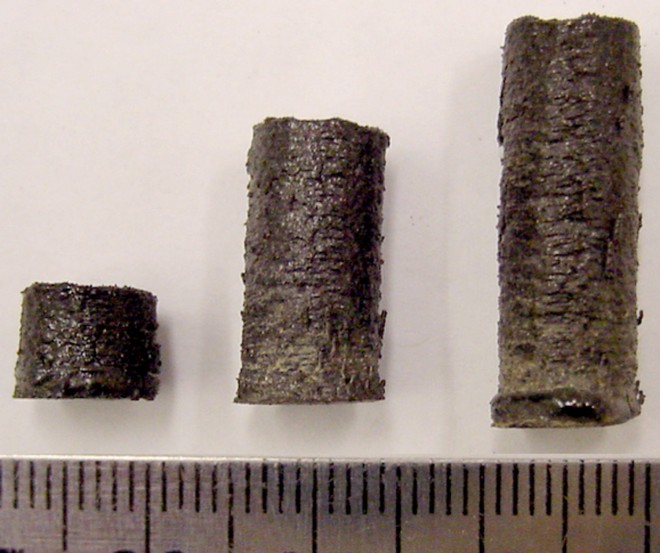Moon Rocks Could Fuel 3D Printers

WSU used a lunar rock simulant to build these tubes with AM. Courtesy of WSU.
Latest News
December 4, 2012
NASA has embraced the concept of additive manufacturing (AM) in a big way. The agency has looked to AM to build satellites in space, used it to create parts for the space exploration vehicle (SEV), and has investigated including a small 3D printer on board the SEV and future spacecraft flights.
That list doesn’t even include ideas to leverage AM to build small, unmanned rovers or creating end-use parts for its J-2X engine. Now, NASA is looking into the possibility of using lunar rocks to fuel 3D printers on the moon.
The idea started with a paper published in the Rapid Prototyping Journal, written by a group of researchers at Washington State University (WSU). The paper put forth the notion that lunar rocks could be crushed, and the material used with a laser sintering AM process to build objects.
Intrigued, NASA sent WSU some lunar regolith simulant. The substance is manufactured on Earth to simulate the mix of minerals found in lunar rocks, including silicon, aluminum, calcium, iron and magnesium oxides. Only NASA gets to play with real moon rocks, which are considered a national treasure.
WSU researchers used the simulant to test their theory, and found achieving consistent results was difficult, owing to the fact silicon and oxide don’t melt uniformly. Rather than just upping the power, the team achieved success creating tools using AM methods similar to those used for ceramics.
“If you go higher, then what will happen is you will go from honey to water, and then what happens?” said lead author, Amit Bandyopadhyay. “It flows so much that you cannot make a part. So you need to have, you know, high enough to melt, but low enough not to overflow, basically. That’s the challenge.”
Building spare or replacement parts on the moon could possibly save millions of dollars in shipping costs, but the process won’t work for everything. Lunar rocks don’t create a fine enough material to print electronics, but are just dandy for objects like nuts and bolts.
Below you’ll find a video about the process.
Subscribe to our FREE magazine, FREE email newsletters or both!
Latest News
About the Author
John NewmanJohn Newman is a Digital Engineering contributor who focuses on 3D printing. Contact him via [email protected] and read his posts on Rapid Ready Technology.
Follow DE






